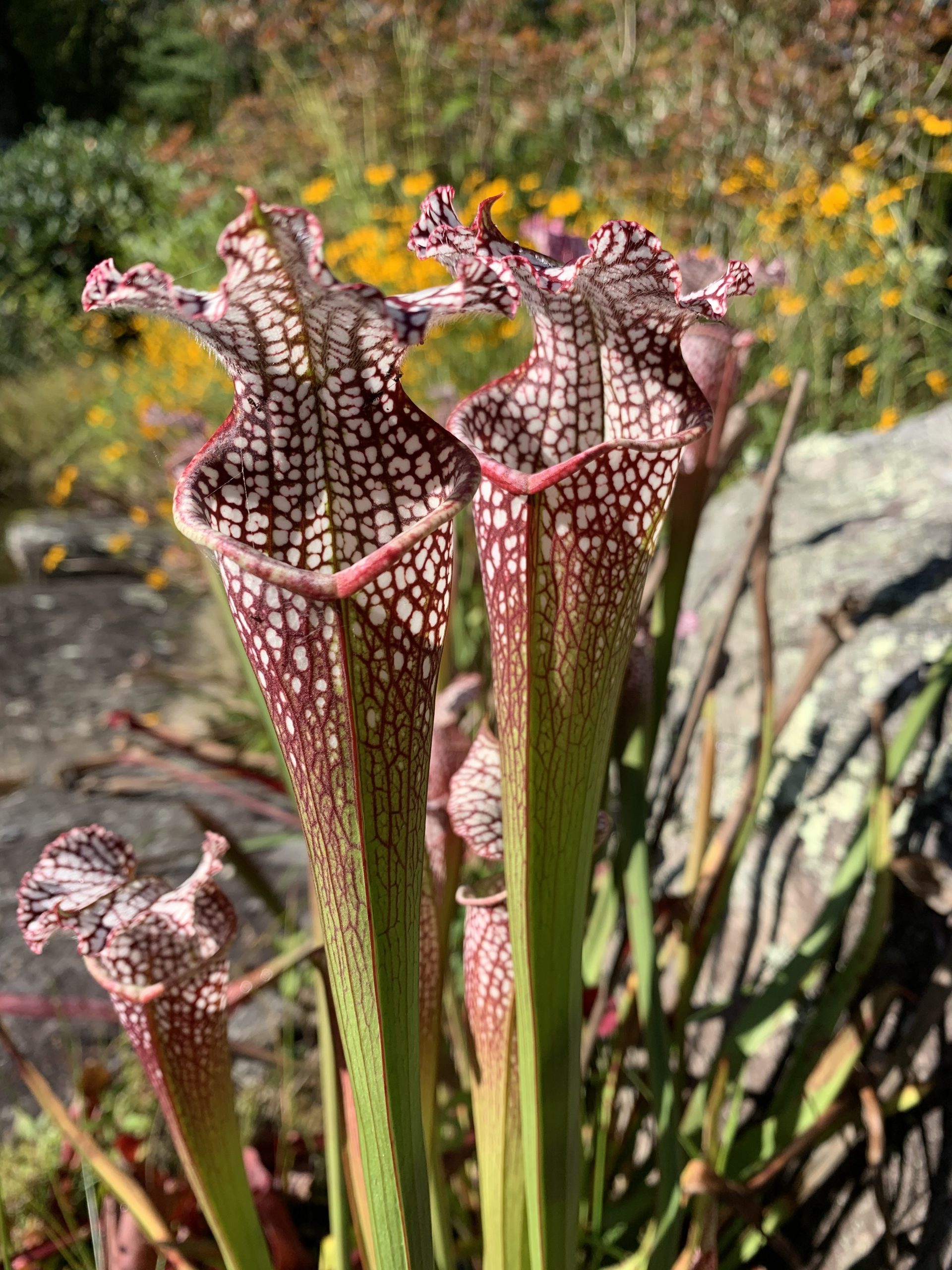Fall seemed to arrive quickly this year. Cool temperatures twenty degrees below average always get my attention. But guess what? The plants were expecting it! The shorter daylength was already beginning to occur and the plants were tracking its progress, slowing down photosynthesis and storing up sugars for energy in the spring. Evergreen plants will continue to take advantage of the sunlight on warmer winter days and sporadically continue to photosynthesize. While most plants will be dormant, don’t ignore your newly planted evergreen shrubs and trees in the winter if there is a dry spell. Some evergreen plants, such as boxwood (Buxus sempervirens), actually do grow most of their roots during in the winter months.
When the green chlorophyll is gone, the compounds that are left give leaves their different hues. Those compounds are anthocyanins, carotenoids and flavonoids. There is also fall color that most of us don’t expect to see – white. We have several species of plants that exhibit white fall color, due to a lack of chlorophyll in the leaves. Since no other color compounds remain once the chlorophyll has been broken down and absorbed into the plant, only a white leaf is left. Examples are Hayscented fern, Mountain Angelica, and Mountain Holly.
Did you know Rhododendrons exhibit fall color too? The oldest leaves turn orange and yellow before they drop, so don’t think something is wrong with your rhododendrons in the fall when they shed a few leaves – this is normal. The Pinkshell Azaleas we enjoy, grow and sell in the nursery exhibit a stunning red fall color and Flame Azaleas tend to have beautiful orange fall color. Autumnal foliage is a wonderful way for the plants to say thank you for the growing season and give us one last hurrah before their winter hibernation.
As the leaves fall, I am already thinking about new leaves grown next year. Recently, I experimented by sowing seeds of Baptisia tinctoria and Thermopsis vilosa I had just collected. I sowed the seeds before they dried out after the seed pods (fruit) had turned black. The reason was to see how successful freshly mature seeds, not yet dormant, would germinate without an extended cold wet period or stratification, which brings the seed embryo back out of dormancy. About three weeks later, both species were beginning to germinate, but in low numbers. Out of 160 seeds only 29 Baptisias germinated and survived. Thermopsis did a little better, with 15 out of 30 seeds germinating. While successful, the seedlings will have to be taken care of till next spring as, more than likely, they will not go dormant during winter since they are assuming it is spring! We will keep them indoors under artificial light and give them a diluted fertilizer now that they have made their first set of true leaves. Next spring, we will plant them or pot them up for sale later.
Another important fall horticultural task is deadheading aggressive species before they release seeds. Some of the bigger ones we focus on are Joe Pye weed and Solidago. Food sources for wildlife become harder to find as the dormant season of winter approaches. Therefore, we leave the seed heads on all winter long for certain species like rudbeckia lancinate (cutleaf coneflower) and echinacea purpurea (purple coneflower) as food for the birds.
As we embrace the changing of seasons there is much to reflect on and enjoy. Each day brings new wonders in the natural world from white fall color, to seeing seeds sprout or the landscape opening up to blue skies as the leaves fall. I’m ready to see what wonders the next season will bring.

